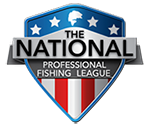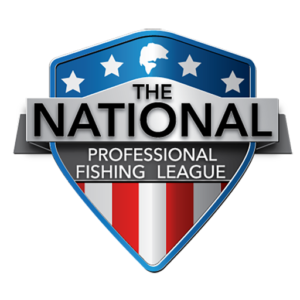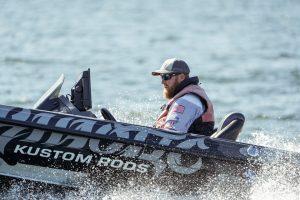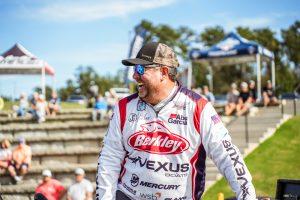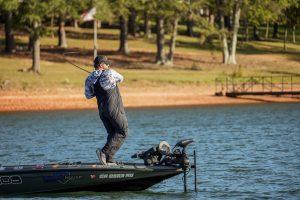Story by Sean Alvarez | Photos by Tanner & Travis Lyons
Thomas Edison claimed to have failed 10,000 times before inventing the light bulb. Edison would look at failure as a steppingstone to success. He had a “growth mindset” which eventually led to life-changing success. In the bass fishing world, this growth mindset translates well to what great anglers must do after a day on the lake—whether it’s a good day or a bad day.
For those who followed along, my experience at NPFL Stop 3 on Douglas Lake was both a sizzle and a fizzle.
On Days 1 and 2, I had decent limits within the first hour and then caught fish everywhere I went and upgraded slightly as the days progressed, keeping me in striking distance. Having a good limit in the first hour is what we all hope for—it eases the pressure, for sure. However, I quickly saw that maybe I wasn’t on to the consistent 3 pounders needed to win it, but I knew I had 2 1/4- to 2 1/2-pound fish in my areas that would at least get me a decent check.
After a good practice having caught fish at all depths, I opted to mix both shallow and mid-level approaches on tournament day, targeting those bushes and vegetation that had been flooded a week earlier. Most pockets I found had a secondary level of vegetation alongside the pocket’s ditch or drain. I found that by slow rolling a Z-Man Evergreen ChatterBait Jack Hammer on a Dobyns 734C casting rod and by working a crankbait on a Dobyns 705CB casting rod through the ditch and deeper submerged bushes, I could capitalize on aggressive fish in the 5- to 8-foot zone that were often overlooked. I could confidently go into a pocket that someone just fished and catch the fish they drove right over. I thought it was a sneaky pattern that could pay off.
But something strange happened on Day 3. Maybe the cold morning caused a subtle change, maybe I had fished out the holes, maybe the shad spawn pulled back. I’m not sure what it was, but it wasn’t the same bite. I knew it with my first fish of the morning—a little 1 pounder that barely had one of the back hooks of a crankbait skin-hooked on its upper lip. I noticed that the bites I was getting were soft, subtle, and few and far between. They were not attacking and choking on the bait as they were in practice.
It didn’t matter what I threw at them or where I went. Four out of five bass were coming up, shaking their head once, and tossing the bait right back at me. It was a “back hook” sort of day that we all hate, and it resulted in me losing enough fish that I could have replaced every fish I ultimately weighed in with at least 2 1/4 pounders and then taken home a good check. I had an acute case of the drops that day that became laughable after a while because no matter what I did differently, they didn’t seem to want to be boated by me and go for a nice, comfortable ride back to Dandridge Dock in my Phoenix.
In retrospect, the daily rise of water seemed to hurt my bite, while the shallow bush and willow bite got stronger as the event progressed and seemed to help others.
Live and learn. The sneaky pattern isn’t always sustainable for three days when the water is rising or falling.
One stingy 8-pound day—just one—was enough to take me out of check contention and drop me like a brick in both the tournament and the Progressive Angler of the Year standings. There’s no room for error with this talented group.
I’ve always said, “If I’m not on the water, I’m not learning!” To me, this is the hidden meaning behind the “time on the water” saying we all use. It’s not just time spent casting or driving around, it’s time spent improving. The great anglers I have met are the ones that can take a bad day and not only learn from it but grow from it. While I didn’t necessarily have the biggest bag, I must have gotten a top 5 finish in the “growth” category. This growth will ultimately make me even better at future events.
My first step in preparing for the upcoming Stop 4 on Lake Eufaula is to reflect upon and compile my learnings from Stop 3 and add those learnings to my arsenal—i.e., “growth”. Eufaula will have water dropping from its current level of 9 feet above full pool. While I’ve never fished the lake before, I’m confident that I can do well there armed with some fresh growth added to my bag of tricks.
I’ll be fishing to win!
When you’re on the water, don’t just fish. Learn from what went right and what didn’t. Write down your learnings in your journal or spreadsheet and apply those learnings. A growth mindset is the most important and valuable tool you can have in competitive bass fishing. Eventually, you will find yourself facing adversity or change during competition. At that time, the light bulb of growth will shine brightly, and your adjustments or new approach could result in a big victory.
Fish me luck!
Sean Alvarez – Angler Profile
